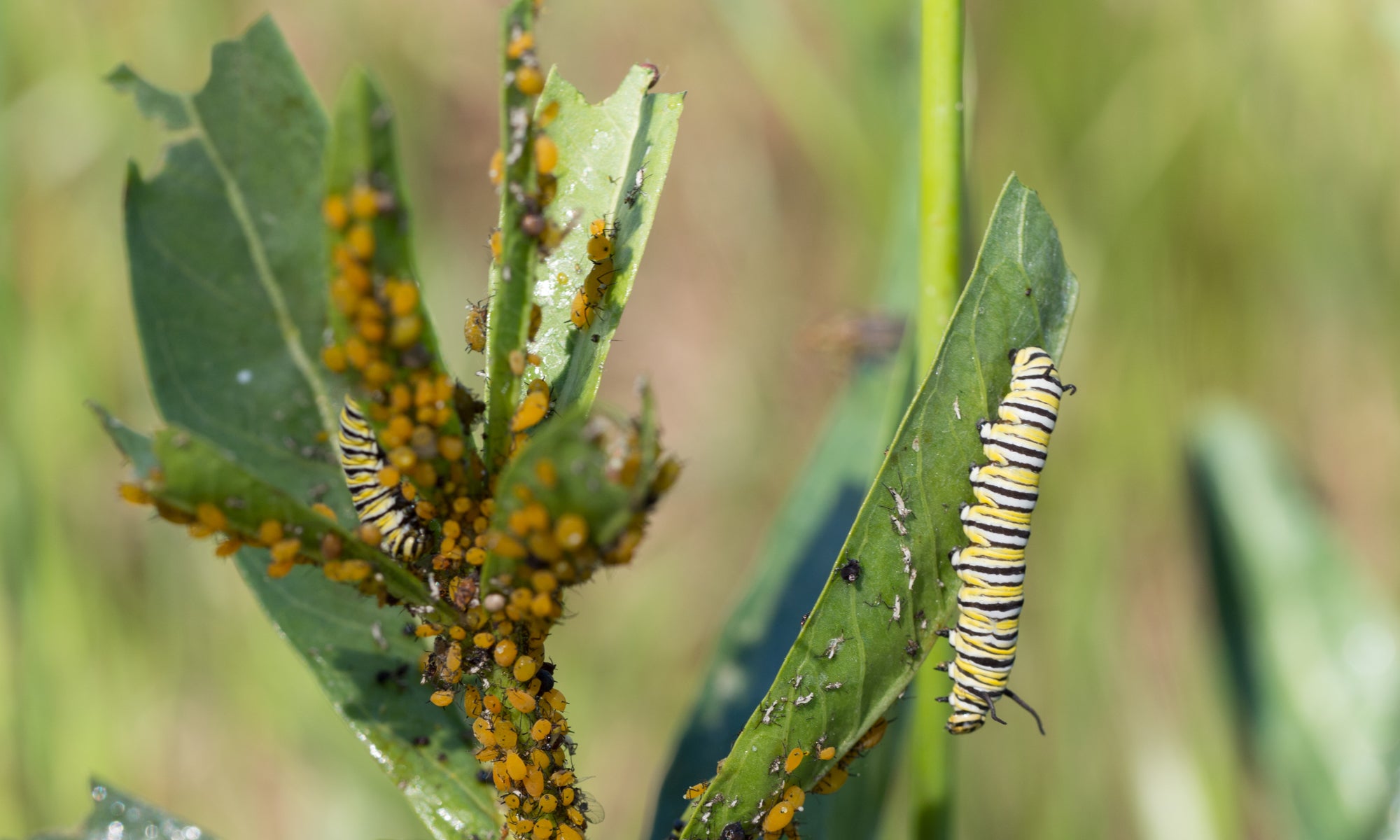Heather M. Kharouba and Louie H. Yang
Abstract
There is increasing evidence that climate warming will have both direct and indirect effects on species. Whereas the direct effects of climate warming represent the proximate physiological consequences of changing abiotic conditions, the indirect effects of climate change reflect changes mediated by at least one other interacting species. The relative importance of these two kinds of effects has been unclear, limiting our ability to generalize the response of different species to climate change. Here, we used a series of experiments to disentangle some of the key direct and indirect effects of warming on the growth of monarch butterfly caterpillars (Danaus plexippus) and showy milkweed plants (Asclepias speciosa) during a window of rapid growth for both species. The effects of warming differed between direct, indirect, and combined effect experiments. Warming from 26°C to 30°C directly increased the growth of both monarch larvae and milkweeds, with monarch and milkweed growth rates showing similar sensitivity to warming. However, in a subsequent experiment, we did not observe significantly increased growth when comparing caterpillars and plants reared at 27°C and 31°C, suggesting that small differences can change the direct effects of warming. When caterpillars that were maintained at laboratory temperatures were fed leaves from host plants that were exposed to warmer temperatures, warming had a negative indirect effect on larval growth rates likely mediated by decreases in milkweed leaf quality. In experiments combining direct and indirect effects, we observed a net positive effect of warming on larval growth rates. Warming had no combined effects on milkweed growth, potentially due to opposing positive direct and negative indirect effects on growth mediated via increased monarch herbivory. These results show how variability among the direct, indirect, and combined effects of even relatively simple, short-term climatic perturbations can present challenges for predicting the broader effects of climatic warming in multispecies communities.
Ecosphere

